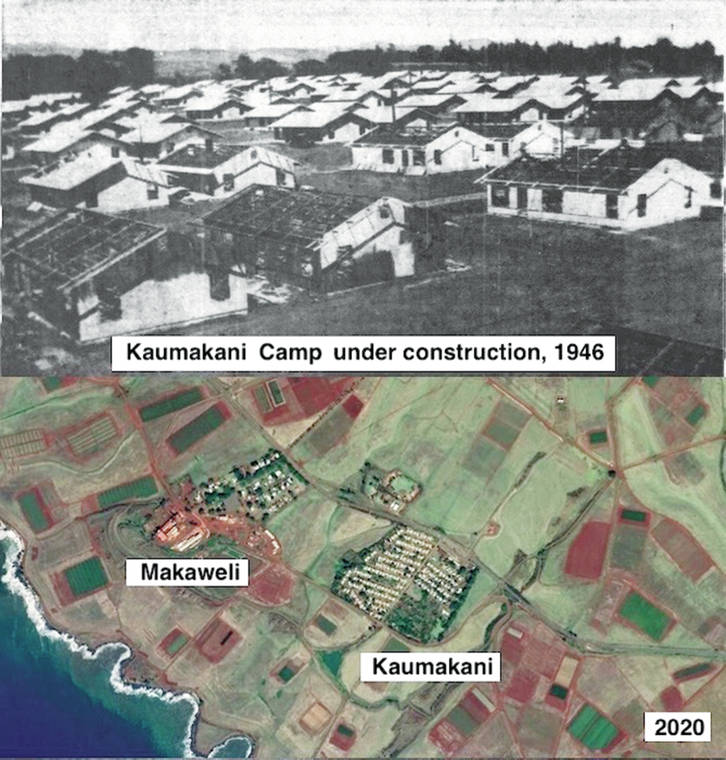In 1946, Olokele Sugar Co. allocated funds totaling $1,750,000 (roughly $23,000,000 in 2020 dollars) for the rehabilitation of all of its plantation housing, in which an entirely new employee-housing camp would be built to replace the company’s dilapidated camp housing erected in 1888.
The new camp was called Kaumakani, having taken its name from nearby Kaumakani School.
Its construction site was situated about a quarter mile southeast of the old camp, and across the main highway from the school’s grounds, in a canefield leased from Gay &Robinson Sugar Plantation that sloped gently toward the ocean.
Construction commenced in March 1946 with the laying of streets, sewer lines and water mains leading to a new artesian well.
When construction was completed in 1947, Kaumakani was comprised of 228, three-bedroom houses, graveled streets, community garages, a general store, a theater, a community hall, small shops and a post office.
Its prefabricated houses, each with floor space of 1,000 square feet, contained a living and dining room, three bedrooms, a kitchen and a bathroom, as well as modern plumbing, electricity and septic tanks built on a 4,400-square-foot lot.
Additionally, a pedestrian crossing over the highway was built between the school and the new camp to safeguard children on their way to and from their studies.
Recreational facilitates in the new camp provided for a pool hall, a ball park and several playgrounds.
More than 1,000 Olokele Sugar Co. employees and their families living in the old camp, which was demolished, began occupying Kaumakani in May 1947, with Olokele Sugar Co. requiring only nominal rents from its tenants.
Of interest at that time was Kaumakani’s beauty shop, operated by Miss Sue Sakahashi, a native of Makaweli, and Mrs. Tomiyoshi Gushiken, whose machinist husband fashioned the living room furniture of their new home.
Gay &Robinson Sugar Plantation, which closed in 2010, bought out Olokele Sugar Co. in 1994, and continues to this day to allow plantation retirees and their beneficiaries to remain in their Kaumakani housing (now worse for wear) at rents much lower than their market value would allow.
•••
Hank Soboleski has been a resident of Kauai since the 1960s. Hank’s love of the island and its history has inspired him, in conjunction with The Garden Island Newspaper, to share the island’s history weekly. The collection of these articles can be found here: https://bit.ly/2IfbxL9 and here https://bit.ly/2STw9gi Hank can be reached at hssgms@gmail.com


